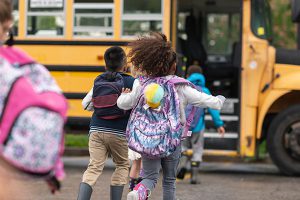National Preparedness Month – Planning for Environmentally Safe Disaster Recovery for Children
Posted on by
September is National Preparedness Month. Natural disasters, such as hurricanes, can happen at any time, and preparing for them can be challenging, especially in places where children spend time. However, public health and environmental health professionals can play a role in informing emergency planning in these settings, especially for the recovery process.
Families and communities expect schools and childcare centers to keep their children safe from a range of emergency events, including natural disasters. Natural disasters, such as hurricanes, can happen at any time, and preparing for them can be challenging. However, public health and environmental health professionals can play a role in informing emergency planning in these settings, especially for the recovery process.
At the Agency for Toxic Substances and Disease Registry (ATSDR), it is well-understood that a child’s environment can directly affect their health and well-being. After a disaster, children might be exposed to harmful substances, such as lead, if they spend time in places that have not been carefully assessed for hazards. As children are at higher risk from environmental hazards because of their physical, developmental, and behavioral differences from adults, their needs should be considered in emergency preparedness and recovery.
ATSDR’s Choose Safe Places for Early Care and Education (CSPECE) Disaster Recovery Supplement helps public and environmental health professionals learn how to reduce children’s environmental exposures where they learn and play. This tool also provides professionals with the information they need to:
- identify potential hazards and
- compile resources to address environmental hazards resulting from disasters, such as flooding and hurricanes, that can affect locations where children spend time
Most importantly, it helps establish ways to reduce risk and help community members, particularly children, feel secure as they recover and return to pre-disaster routines.
ATSDR recognizes challenges in preparing for natural disasters especially when it comes to protecting children. However, with the right tools and guidance, schools and childcare centers can plan for how they will recover from incidents before they occur, which can make the recovery process quicker and more effective.
To learn more, visit https://www.atsdr.cdc.gov/safeplacesforece/disaster-recovery-supplement.html.
Tweet this: This National Preparedness Month, plan ahead and protect children from harmful exposures during #DisasterRecovery. Read #ATSDRs blog to learn how you can help. https://bit.ly/3cD9Ua4 #BeReady


Post a Comment